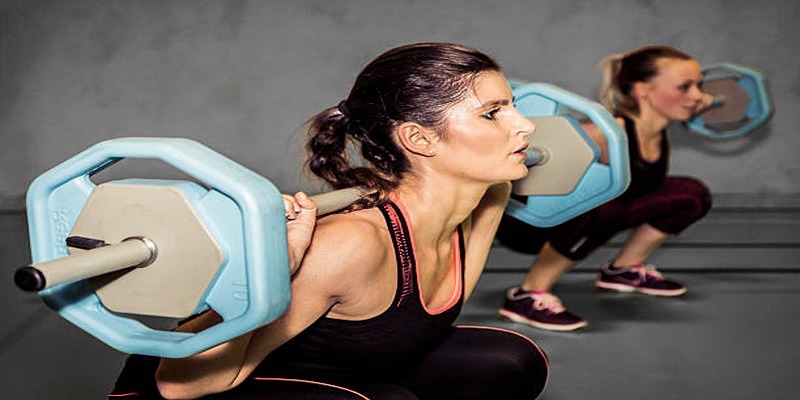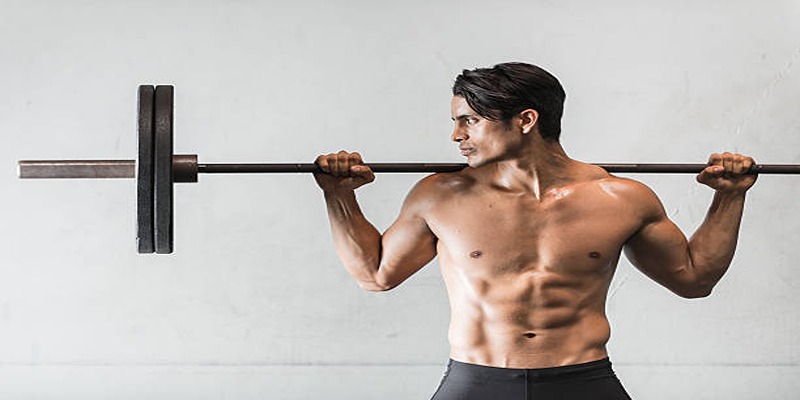Barbells are a staple of effective workouts and, when used correctly, can help you build strength, improve flexibility, and level up your fitness game. But there's more to barbell training than just powerlifting or bodybuilding. A thoughtful selection of barbell exercises can work your entire body while enhancing your range of motion.
Benefits of Barbell Workouts for Strength and Flexibility

Barbells are more than just tools for gaining muscle mass. They offer benefits that go beyond strength gains:
- Compound Movements: Barbell exercises often target multiple muscle groups at once, improving overall strength and coordination.
- Customizable Resistance: With adjustable weights, barbells accommodate fitness levels from beginner to advanced.
- Full Range of Motion: Proper technique in barbell exercises allows you to enhance flexibility and joint mobility over time.
- Time Efficiency: A few key barbell moves, focusing on your entire body, maximize results without needing a lengthy gym session.
When combined with a focus on form and mobility, barbell workouts are a powerful tool for building both physical strength and functional movement.
Setting Up for Success
Before jumping into a workout, make sure you're set up for optimal performance and safety.
Start With The Basics
Warm-Up
A solid warm-up primes your muscles for movement and prevents injury. Spend 5–10 minutes performing dynamic stretches and light cardio (e.g., jogging, jumping jacks, or rowing).
Equipment Check
Use a barbell suitable for your strength level. Beginners can start with an empty bar (about 45 lbs for Olympic bars or 15 lbs for lighter training bars) and progress to adding weights as needed.
Focus On Form
Proper form is critical for injury prevention and effectiveness. If you're unsure about your technique, consider working with a trainer or watching trusted instructional videos.
Create the Perfect Environment
- Use flat, non-slip gym shoes or train barefoot for a solid base.
- Make sure you’re in a space where you can safely drop the bar if needed (especially for deadlifts or overhead lifts).
- Stay hydrated throughout the session.
Now that you’re prepared, let's move into the actual workout.
The Total-Body Barbell Workout
This workout consists of five effective barbell exercises that target multiple muscle groups while promoting flexibility. Perform 3–4 sets of each exercise, with 8–12 reps per set, depending on your fitness goals.
1. Barbell Back Squat
The barbell back squat is a foundational compound exercise that strengthens the lower body while engaging the core for stability. This movement primarily targets the quadriceps, hamstrings, and glutes, but it also activates the lower back and calves for support.
How to Perform:
- Place the barbell across the back of your shoulders, holding it with both hands.
- Keep your feet shoulder-width apart, toes slightly pointed out.
- Sit back and lower into a squat, keeping your chest up and knees aligned.
- Stand back up by driving through your heels.
Tip: Don’t go too heavy right away. Focus on form and depth to improve your mobility.
2. Deadlift
The deadlift is a powerful compound movement that targets multiple muscle groups, making it one of the most effective exercises for building overall strength and muscle mass. It primarily works the posterior chain, including the hamstrings, glutes, and lower back, while also engaging the core, forearms, and upper back for stabilization. Performing deadlifts regularly can improve your posture, enhance athletic performance, and increase functional strength for everyday activities.
How to Perform:
- Stand with feet hip-width apart, barbell over your midfoot.
- Bend at your hips and knees to grip the barbell just outside your knees.
- Keep your back straight, engage your core, and lift the barbell by driving through your hips and knees.
- Lower the bar back to the ground, maintaining control.
Tip: Avoid rounding your lower back at all costs; a straight back ensures safe lifts.
3. Barbell Overhead Press
The barbell overhead press is an essential compound movement that targets the shoulders, triceps, and upper chest while engaging the core for stability. This exercise is fundamental for building upper body strength and improving overhead mobility. By pressing the barbell overhead with proper form, you not only enhance muscular development but also reinforce functional strength for daily activities that require lifting or reaching. Additionally, the barbell overhead press can help improve posture and overall shoulder health when performed regularly and correctly.
How to Perform:
- Hold the barbell at shoulder height, palms facing forward, elbows slightly in front of the barbell.
- Engage your core and lift the barbell overhead with fully extended arms.
- Slowly return the barbell to the starting position.
- Tip: Keep your glutes tight and avoid overarching your lower back.
4. Barbell Bent-Over Row
The barbell bent-over row is an essential compound exercise that targets the muscles of the upper back, lats, and posterior shoulder, while also engaging the core and lower back for stability. This movement is highly effective for developing a strong and balanced back, improving posture, and enhancing pulling strength. Proper form is crucial when performing this exercise to avoid injury and maximize its benefits.
How to Perform:
- Hold the barbell with a shoulder-width grip, palms facing down.
- Hinge at your hips, keeping your back straight, until your torso is close to parallel with the ground.
- Pull the barbell toward your chest, squeezing your shoulder blades together.
- Lower the barbell with control.
- Tip: Avoid using momentum to lift the bar. Slow, controlled reps are more effective.
5. Barbell Romanian Deadlift (RDL)
The Barbell Romanian Deadlift (RDL) is a foundational exercise in strength training, particularly effective for building posterior chain strength. This movement targets the hamstrings, glutes, and lower back, playing a crucial role in enhancing overall lower body power and athletic performance. Unlike the traditional deadlift, the RDL emphasizes a hip hinge motion, prioritizing controlled movement and tension in the targeted muscles.
How to Perform:
- Hold the barbell with both hands, feet hip-width apart.
- Hinge at your hips, lowering the barbell along the front of your legs while maintaining a flat back.
- Stop when you feel a stretch in your hamstrings, then return to the starting position.
- Tip: Keep your knees slightly bent and avoid locking them out during the movement.
Progression and Flexibility Integration

To see consistent progress while reducing your risk of injury, focus on incremental increases in weight. At the same time, integrate flexibility-building practices like yoga or static stretching post-workout to complement your strength training.
Cool Down for Recovery
After completing the session, spend 5–10 minutes cooling down to promote recovery. Gentle stretches for your hamstrings, hip flexors, and shoulders can help reduce muscle tightness after an intense workout.
Conclusion
Including barbell training in your fitness routine can transform your body in ways you never imagined. The mix of strength and mobility gained through these exercises doesn’t just improve your gym performance; it carries over to better posture, reduced risk of injury, and increased daily functionality. Whether you’re lifting at home or in a gym, this total-body workout is a solid foundation for building strength and flexibility.












